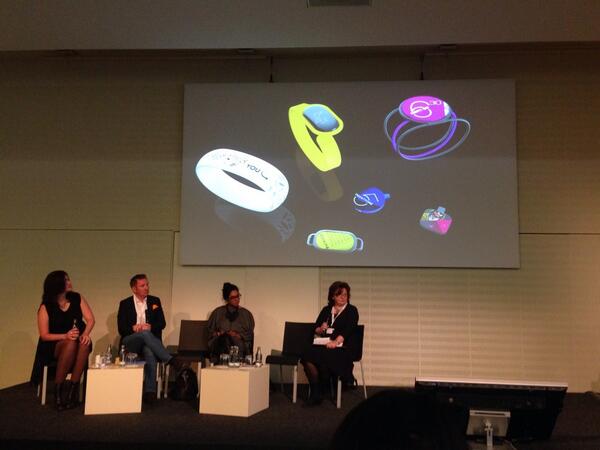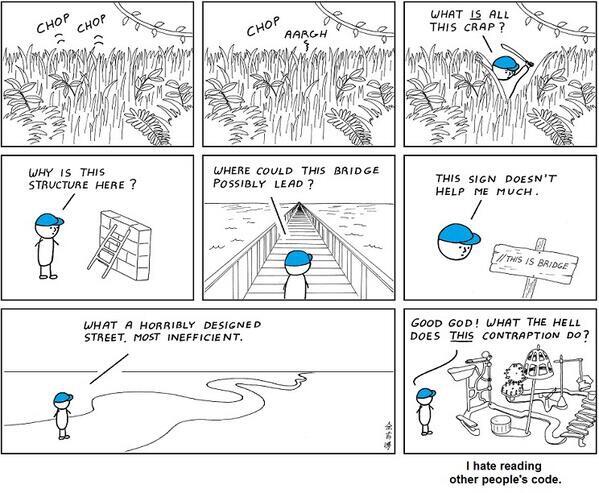Sections
Pick of the week
- This HBR post outlines a quantitative method for analysing growth opportunities. A key point is that analysing what customers really want can be done by conducting a careful data-led analysis of what they say in response to specific structured questions. Which needs to be conducted on a statistically significant set of customers and prospects. And contrasts with an all too familiar approach based on opinion and anecdote.
Smartphones/OEMs
- Vanity Fair published a long investigative piece covering the background to the patent war between Apple and Samsung. It’s interesting reading albeit somewhat pro-Apple. The Samsung parts focus on alleged business practices.
- Between them, Apple and Samsung are making all the profit in mobile device manufacture. While they slug for supremacy, every other major OEM is making a loss or at best breaking even.
- Nokia’s decline over the last 4 years is particularly severe. It’s stark enough in terms of the numbers but equally grim though less obvious to see in terms of talent drain. This week it emerged that one of the key technical staff behind Lumia’s PureView technology left to join Apple.
- Samsung’s head of Mobile Design has been replaced amid suggestions of a link with poor Galaxy S5 reviews: “Samsung Electronics Co Ltd, the world’s biggest handset maker, has replaced the head of its mobile design team amid criticism of the latest Galaxy S smartphone. Chang Dong-hoon offered to resign last week and will be replaced by Lee Min-hyouk, vice president for mobile design”
- Bouyed by the success of their Hudl tablet, Tesco are planning to launch their own brand Android phone. It sounds like it is going to be a competitively priced premium product from a technology perspective and could prove a disruptive new entrant when combined with Tesco’s 4G MVNO.
- TNW’s review of the Oppo’s 5.5inch Find 7a Android smartphone was very positive and another sign of growing Chinese OEM industrial design excellence: “Slowly but surely, Oppo is building a reputation for itself. The Chinese company has built yet another device with stellar hardware – both in terms of industrial design and the components fitted inside. In all of the key areas – display, camera and speakers – the Find 7a is an absolute joy to use and frequently surpassed my expectations.”

Google/Android/Apps
- The Register’s analysis of Google’s Silver program sees it aimed at Samsung Android dominance: “Google forges a Silver bullet for Android, aims it at Samsung’s heart Premium brand to be launched to regain control of the OS”.
- As part of the bigger picture with Silver it’s worth reading this interesting Recode article on alleged Google arrangements with Samsung and HTC.
- Silver is about creating a premium Android + Google Services (GMS) proposition. Arguably the biggest platform competitor to Android with GMS is Android without GMS, namely vanilla AOSP. Data from ABI Research confirms that to be the case numerically in Q1 2014.

- Google Maps now supports the ability to save maps offline. It’s part of a wider set of improvements including the surfacing of alternative routes.
- Google Search has been updated to allow users to receive Google Now notifications if they pass a retail outlet carrying an item they’ve recently been searching for online.
- Fascinating insights into product strategy from one of the original Google+ team emphasising once again the need to descope and focus ruthlessly on the core essentials. Unbundling to simplify brand app propositions are seen as a key part of this and a parallel TNW article highlights unbundling as a key industry trend.
Asia
- Alibaba is filing to raise $1billion via IPO with some analysts predicting the company will sell up to $20billion in shares. Yahoo stands to majorly cash in – they have a 24% undiluted stake in Alibaba. Quartz published an interesting analysis looking at all the Western companies you’d have to combine to create something equivalent in scope to Alibaba – they are a real “Everything Store”.

Cloud/Infrastructure/Security
- Docker has a lot of mindshare right now as a lightweight infrastructure management technology more in tune with a parallel cultural shift in the world of devops to light systems than heavier weight alternatives such as Puppet.
Car Connectivity
- It seems that the integration of various technologies of convenience in modern cars has inadvertently enabled new forms of crime. A SkyNews investigation suggests “almost half the 89,000 vehicles broken into in London last year were hacked electronically. Modern cars contain about 50 low-powered computers which criminals have learnt to take advantage of to steal vehicles in as little as 10 seconds without causing any damage.”
Services
- farfetch.com is an online aggregator for independent fashion boutiques that got some coverage this week. They just raised £66m in a substantial Series D round.
- Facebook’s F8 developer event introduced a number of new initiatives aimed at mobile developers. Perhaps most interesting was a new cross-mobile system for deep-linking into smartphone apps called ‘App Links’ which sounds more like something the platform providers themselves should be working on given they own the underlying APIs. It’ll be interesting to see how it fares.
Big Data
- Tableau Software is an increasingly dominant player in the business intelligence visualisation space with 86% YoY growth in Q1.
- Splunk Enterprise 6.1 is out with a big push to improve their visualisation proposition.
- Good reminder that data analysis is just one element in a typical end to end data science workflow. Much of the work is in data wrangling.
- Slides from the recent Amazon Web Services Summit in London have now gone online. A particular highlight was a deep dive deck on Elastic Map Reduce outlining some best practices for Amazon’s “Hadoop As A Service” proposition. Judging by the number of attendees at the talk, this is an important reason for using AWS for many organisations with a data science function:
Wearables/InternetOfThings
- Interesting GigaOM Sector Roadmap for Quantified Self devices and platforms which identifies sync as a key direction and highlights a data science led approach to behavioural change as a critical factor: “Interoperability is the most important Disruption Vector. Data integration across personal and professional sources is a huge challenge…. At this point, there’s no obvious data integration supplier or platform. Companies that can create a data analytics business model, particularly one that supports and encourages the potential for behavioral change, will be winners.” The report suggests the early lead in Quantified Self platforms is held by Fitbit.

- OMSignal smartwear shirt now available for preorder. Sounds potentially interesting: “Each of these new shirts tracks your heart rate, breathing rate, breathing volume, movement (step counter), calories burned movement intensity and heart rate information. They track a lot more information than your average wristband or other type of dedicated device, and they also resemble ordinary shirts and don’t add any additional bulk to accommodate the sensor tech they include.”
- Tinitell is a wearable phone with voice activated interface and built-in GPS tracker that could be an interesting addition to the IoT family if it retails sub-$100.

- Reuters report on Apple’s medical hires and possible application to iWatch.
- With all the hype around smartwatches, it not surprising that rumours have surfaced that Microsoft are also looking at doing a fitness/health oriented smartwatch.
- Korulab were at the NEXT14 conference in Berlin. Their Koru platform is a “wearable interface engine” for “social jewellery”. Content is important for such propositions but bearing in mind the needs to be integrated with end to end analytics and data science to ensure dynamism and relevancy.

Miscellaneous
- “You can’t restart the internet” plus other entertaining CLM one-liners for our times from a developer with attitude. He’d probably identify with these sentiments:

- Some useful tips here on how to maximise a small online Marketing budget for maximum impact by making social media channels like Twitter and YouTube work for you. That may sound like a familiar subject but this guide is short and well put together.
- The FT on Minecraft and the seismic impact in encouraging creative play that this “game for children who dream big and build high” is having on a whole generation. The article suggests Minecraft is most popular with “11-16 year old boys” and “has smuggled an educational game past children, and few of them have noticed that it is the pixelated equivalent of eating their greens.”
- Relatedly, an inspiring talk on why learning about being creative with code and computing at school should be an important part of foundational education from Simon Peyton Jones, Chair of the UK Computing at School (CAS) association.